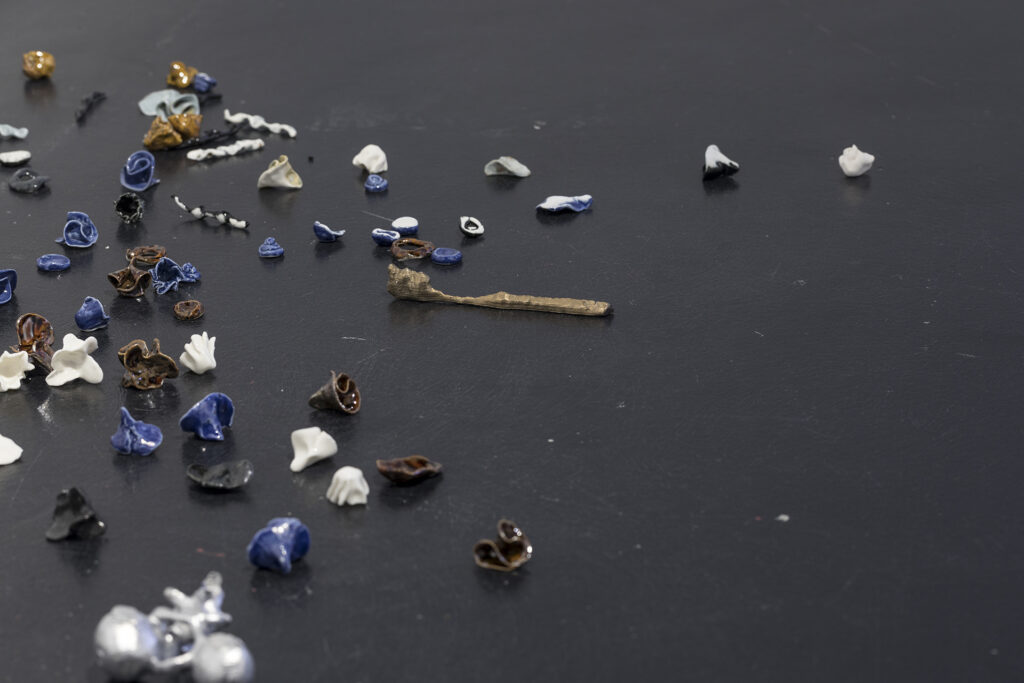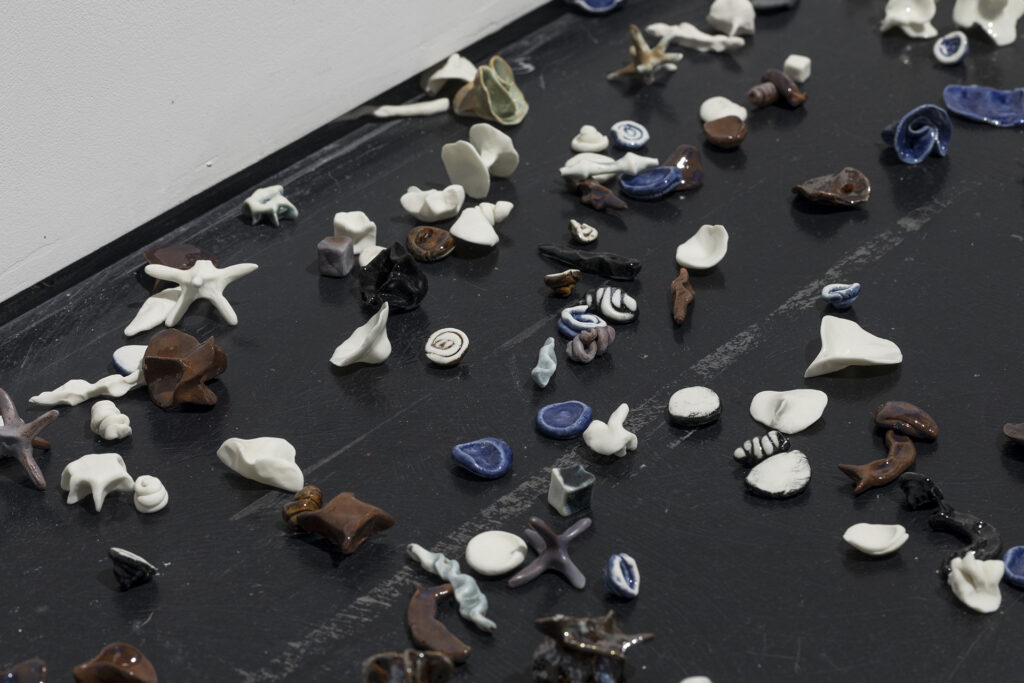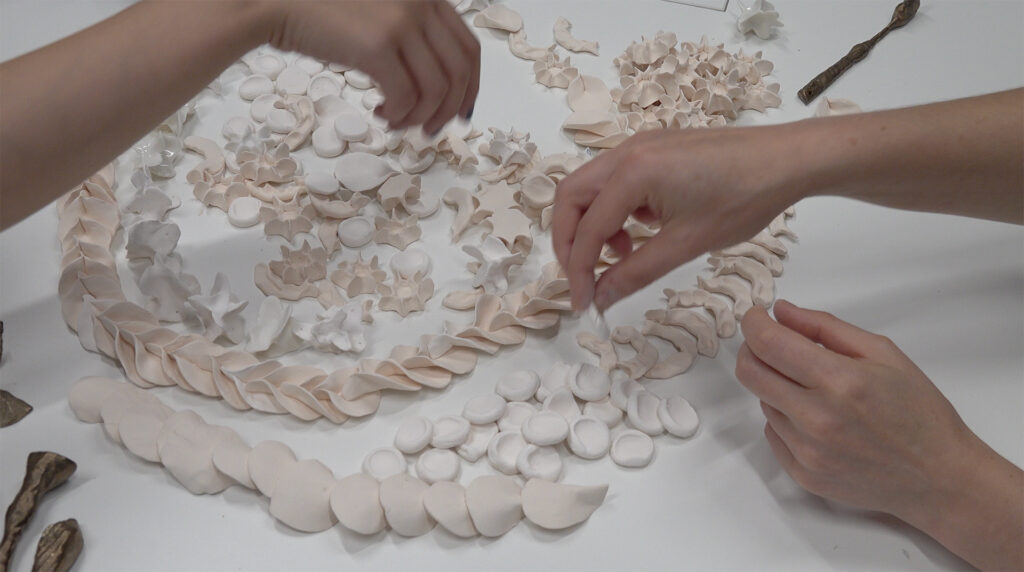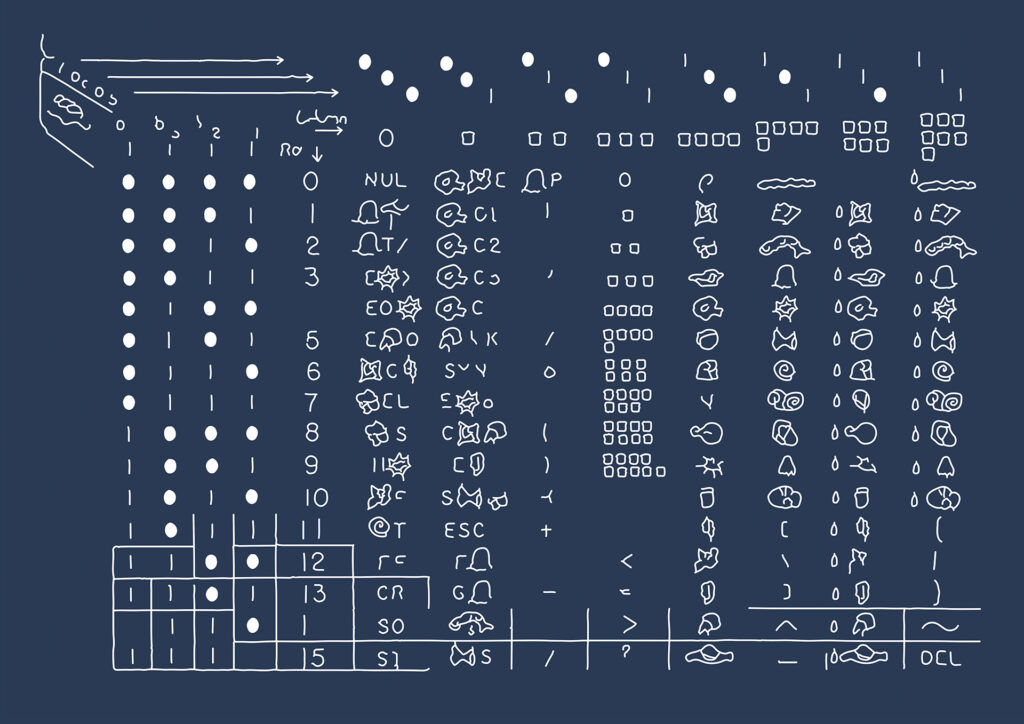A contemplation on the alphabet of a not-so-distant future:
The found debris revealed that the written word was once considered to be a form of digital code.
(data).
It existed inside and outside of the computer as a made-up system of discrete differentiable units. When assembled in certain ways, the meaning of alphabetic sequences could transcend the meaning of their individual parts.
(Such encoding of objects is never neutral.[1])
You told me the digital logic of the alphabet was a communication pattern for weaving; that my DNA also contains letters.
Under the microscope, my DNA looked like a sequence of spiralling programs, woven between two twisting lines. On my computer screen, my DNA looked like invisible binary code, on-and-off signals forming liquid crystals into backlit lines of text.
(Alexander Galloway: ‘data does not organise itself.’[2])
(‘data’ is derived from the Greek word datum — it means: given.[3])
You asked me: What is evolution in a measure?
Looking for the answer, I spent almost two years translating the letters of the alphabet into new shapes, moulding small pieces of clay between my fingertips.
Friends and colleagues started to confuse my letters with seashells.
They thought I was creating a digital beach. Re-materialising digital encryptions into porcelain, I gradually removed some of the codes from the code,
while inadvertently adding others. The translation table removed,
each letter became a choreography, devised only for my fingertips, clay stretched, rolled, flattened and folded between two hands, repeated over and over.
(Perhaps technologies are unstable; perhaps they can become a different kind of technology, depending on the intent of their user.[4] I use my iPad, planned for obsolescence, as a lightbox. I use the internet to research the evolution of the internet, and a blog tells me: DNA is the first digital code.[5])
I kept shaping letters until the alphabet disintegrated into a washed-up symbolic system: thousands of unknown porcelain cyphers, spilling out from the walls of the building and across the floor. J stepped onto one, leaving only a powdery sediment in its place.
The shapes made a tender sound when falling against each other. Each note slightly different, depending on the thickness of the porcelain. You wrote to me, saying that they looked like a snake of rose petal vertebrae, one that had died, flat as knowledge, in a desert.
(data is not information; it becomes information when it is interpreted.[6])
I wanted to email you an answer to your question: to return a composition of seashells, or a disorderly message of sounds and forms, travelling towards your computer in deep water; loving you through fibre-optic ocean cables.
(I come across an online article written by MIT students, suggesting the universe could be itself a giant computer.[7])
(Such theories aren’t limited to digital technologies; for Legacy Russel quilts are material metaverses, transporting fragments of the past into the future, the situated knowledge of communities stitched together[1] [2] [3] .[8])
I sent you a sequence of embodied hermetic letters.
(hermetic letters disguised as data)
But: all my encoded messages translated to
“a gradual shift in haunting,” when read at the speed of light.
[1] Eve Tuck and K. Wayne Yang, “Unbecoming Claims: Pedagogies of Refusal,” Qualitative Research, Qualitative Inquiry, 20(6), (June 2014), p. 812. See also: Kim, Dorothy, and Jesse Stommel. Disrupting the digital humanities. punctum books, 2018.
[2] Alexander Galloway, (accessed 20/7/2023), http://cultureandcommunication.org/galloway/data-does-not-organize-itself
[3] SpringerLink Electronic Dictionary, https://link.springer.com/content/pdf/10.1007/0-387-28695-0_3.pdf
[4] T. Swierstra, P. Lemmens, T. Sharon, & P. Vermaas (Eds.), _The Technical Condition: The Entanglement of Technology, Culture, and Society_ (1 ed., pp. 9-41). Uitgeverij Boom.
[5] Pierre Lévy, https://planetwork.net/2000conf/presenters/levy_text.html
[6] Alexander Galloway, (accessed 20/7/2023), http://cultureandcommunication.org/galloway/data-does-not-organize-itself
[7] Sasha Churikova “Is the Universe Actually a Giant Quantum Computer? Angles / 2015,” accessed October 9, 2023, http://cmsw.mit.edu/angles/2015/is-the-universe-actually-a-giant-quantum-computer/.
[8] Legacy Russell and Salome Asega, Hauser and Wirth, In conjunction with 'The New Bend', an exhibition curated by Legacy Russell (Author and Executive Director of the Kitchen NYC) https://www.youtube.com/watch?app=desktop&v=NxELKO5Jjok accessed 14thMarch 2022 accessed March 14 2022
Alexander Galloway, http://cultureandcommunication.org/galloway/general-formula-for-the-digital-and-the-analog (accessed 20/7/2023)

with Cynthia Arrieu-King, Sofie McClure and Rebecca Bracewell.
Multimedia installation, AI-generated poetry, two-channel video with audio, porcelain, bronze, aluminium, dimensions variable.
Image courtesy of the artist. Photo: Andrew Curtis

with Cynthia Arrieu-King, Sofie McClure and Rebecca Bracewell.
Multimedia installation, AI-generated poetry, two-channel video with audio, porcelain, bronze, aluminium, dimensions variable.
Image courtesy of the artist. Photo: Andrew Curtis

Video still of project development recording. Image courtesy of the artist.

Image courtesy of the artist.
